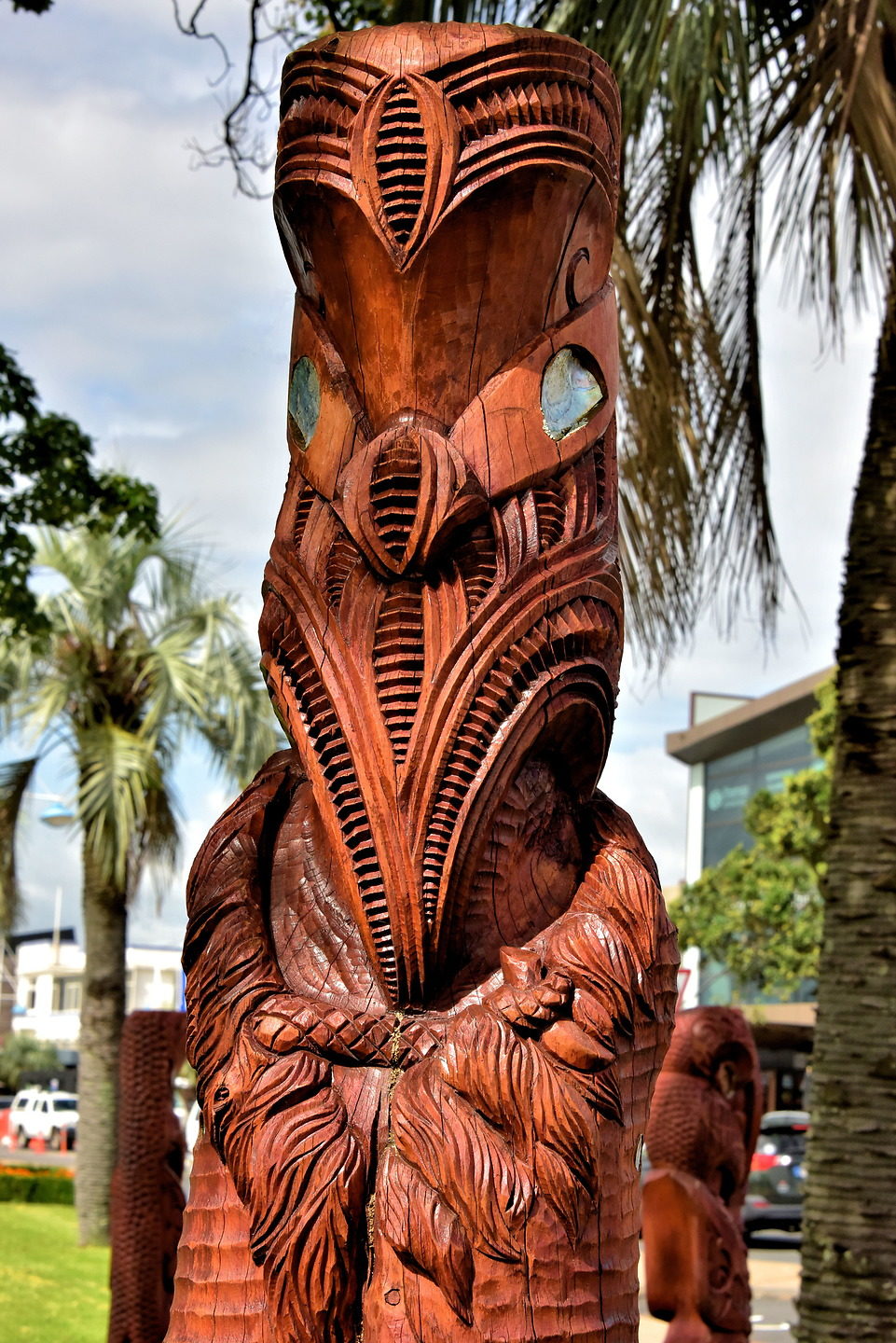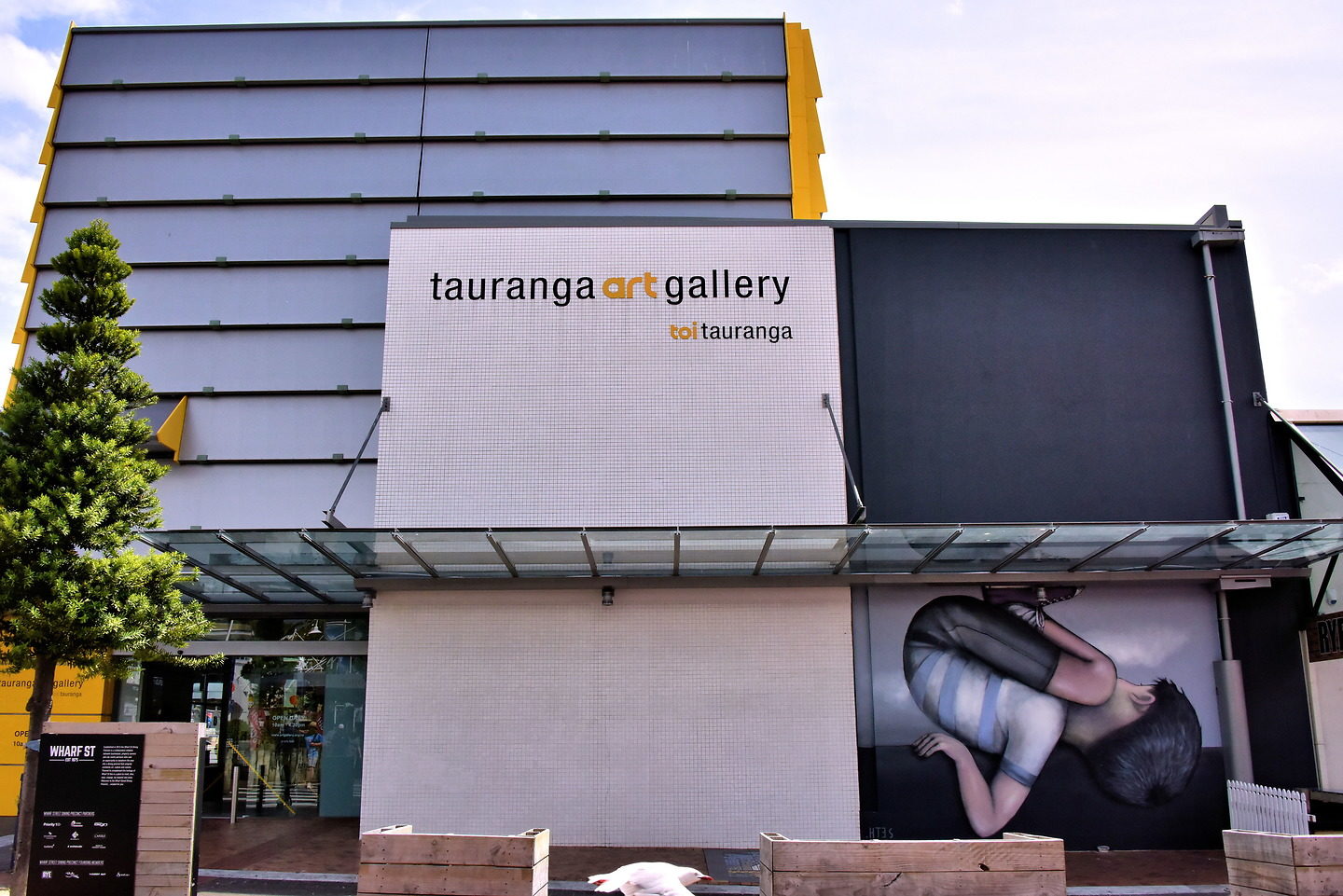Tauranga (Tauranga-moana in Māori language) is located along the Bay of Plenty in northcentral New Zealand on the North Island. It proudly displays monuments to the Māori people who first settled here in the 13th century. The city is also adorned with murals. Many of them are giant reproductions of Renaissance classics.


























